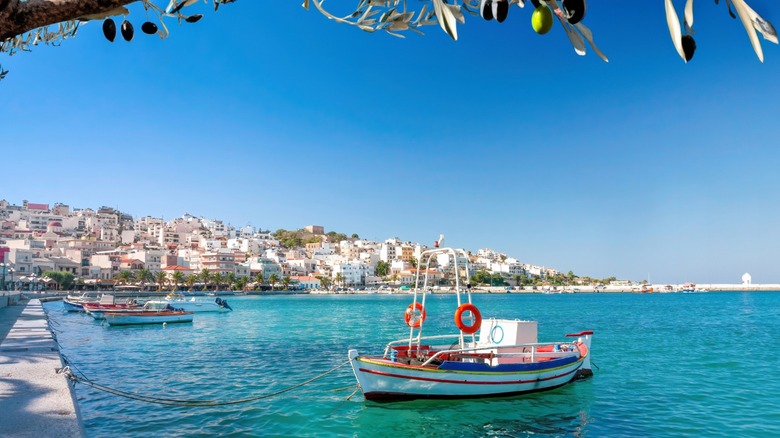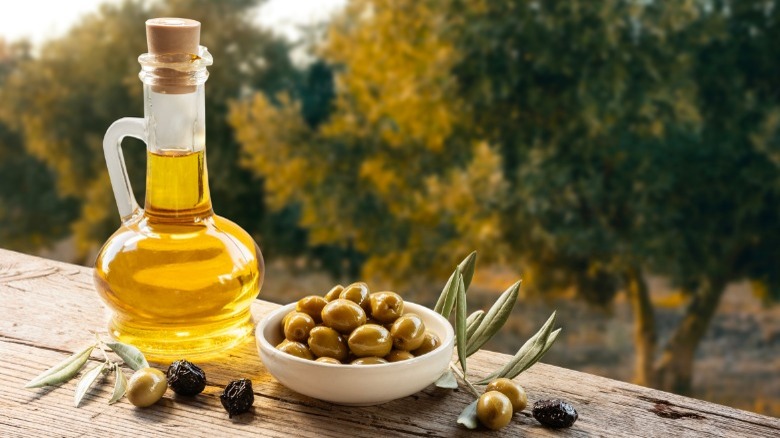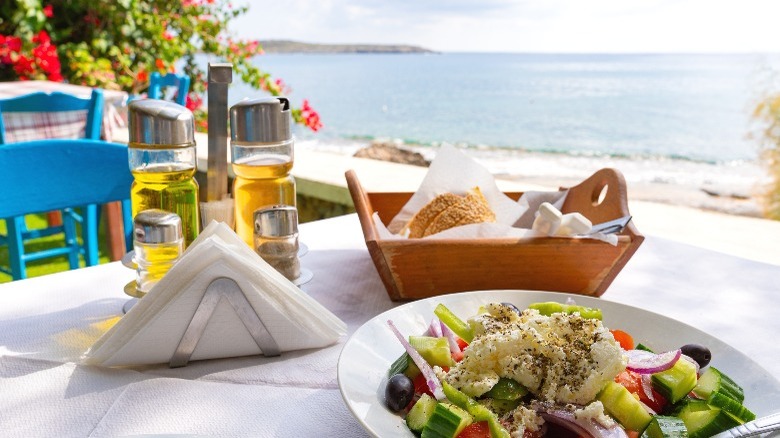The Greek Island That's An Underrated Foodie Destination
Apart from everything else the Greeks have given the world – democracy, the Olympics, Yorgos Lanthimos, etc. – they have contributed a great deal to cuisine. Fresh, crumbly feta cheese sprinkled over a salad; grilled lamb wrapped neatly in pita bread; bowls of tart, creamy tzatziki, perfect for dipping vegetables or gyros. As far as Mediterranean cuisine goes, Italy and Spain get the most attention, but Greece is certainly not to be slept on.
Should you ever find yourself in Greece, there is one island in particular that's earned some renown as a foodie destination. Those who read books on Greek mythology as a child will know Crete as the home of the Minotaur, a man with the head of a bull imprisoned in the center of an enormous labyrinth. But today, the island boasts such a wide range of regional delights that the Minotaur might have found his stay more bearable. Who needs to eat young women sacrificed to the labyrinth when you could have a nice Dakos salad?
In Crete, it's all about the olive
The olive has been of historical importance to the whole of Greece since ancient history, and Crete is no exception. In fact, it's home to the olive tree of Vouves, which is one of the oldest olive trees in the world – potentially even the oldest. Anywhere from 2,000 to 4,000 years old, it still bears fruit, and its branches were used to weave the victory laurels for the Athens Olympics. But the Cretian love affair with the olive goes far beyond one tree.
While you can obviously eat olives as they are – after a brining process, at least – Crete's real claim to fame is its olive oil. Over two-thirds of Crete's landmass is used for olive cultivation, and the island produces approximately 90,000 tons of olive oil a year (80% of which is extra virgin). Cretan families will have a bottle of the stuff on the table at the very least – if not a jug. Tourists can enjoy plenty of tours and tastings at various oil presses around the island.
Great ingredients make for great food
Any chef will tell you that the most important part of cooking is having access to quality ingredients, and one look at Cretan cuisine bears that out. Most of the signature dishes of the island are simplicity itself, but the sheer quality of each individual part makes it truly delicious. There are salads sourced from the abundance of edible greens, or horta, on the island; there are cheeses made from fresh goat milk, like the ricotta-esque mizithra, or sheep's milk, like milky malaka. There is also all manner of baked or smoked meats, from lamb to pork to seafood.
Perhaps most interestingly, there are snails. Oh yes, they're not just a French delicacy – on Crete, they're often tossed in flour and fried in olive oil before being seasoned with simple spices and vinegar. They're referred to as chochlioi bourbouristi — "chochlioi" meaning "snail," and "bourbouristi" being an onomatopoeia of the popping sound that's made when you put them in your mouth. What fun!


